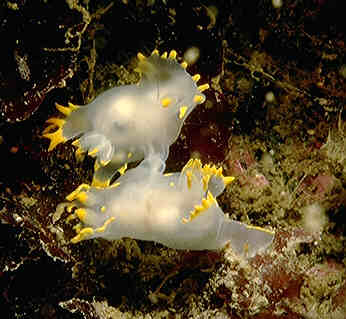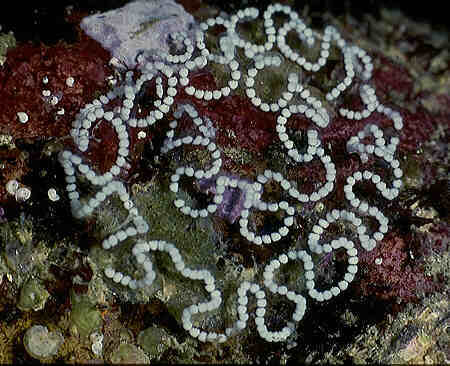Reproduction in nudibranchs

|
Mating pair of Polycera faeroensis
Nudibranchs are simultaneous hermaphrodites; ie. they possess both male and female sex organs and copulation is usually reciprocal, both individuals donating and storing sperm. The reproductive organs open on the right hand side of the body and individuals copulate facing in opposite directions with their right sides together. Hermaphrodism has the advantage that any mature individual of the same species encountered is a potential mate, thereby increasing the chances of fertilization, and each individual can lay eggs, thereby maximising reproductive effort. Self fertilisation is probably possible in many species, but unusual.
|
|
Spawn coil of Janolus cristatus Nudibranchs usually lay their spawn on the organism on which they feed, or on a prominent object nearby. Often the spawn is the only indicator that the nudibranchs are present and it is only on closer inspection that the adult animals are found. The size, shape and colour of nudibranch spawn shows great variation from species to species and is a character used in the identification and classification of species.
| 
|